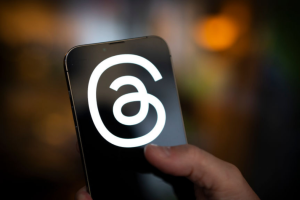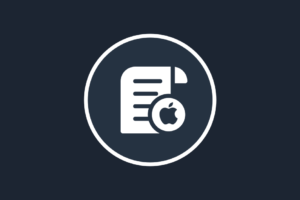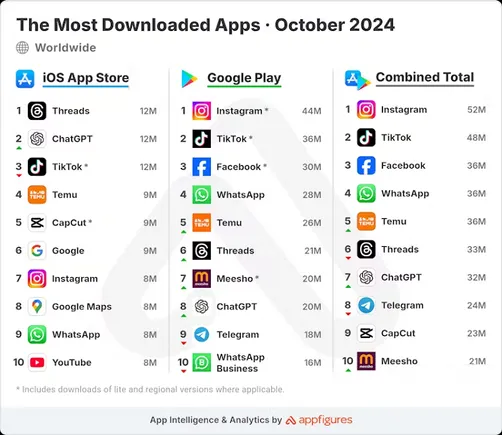I’m sure you’ve noticed that AI is all the rage right now. It’s becoming a part of the conversation – every conversation – regardless of the setting or context. That’s how I know this isn’t a fad, but rather the kind of black swan event that’s revolutionizing our world on front of our very eyes. Generations from now will look back and refer to this as the “AI Revolution” similar to the Industrial Revolution, but in the midst of it, it’s often challenging to understand what’s happening or the impact these advancements can have on more than just generating images or text. So today we’re going to walk through how AI can help build out an actual marketing strategy.
Because this is more than just executing some prompts or listing out tactics you can use for your business. A marketing strategy requires an analysis of your business, your competition, and your target audience. It begs for more than a passing understanding of how to use today’s marketing channels to both reach and relate to the people you hope to sell to.
At the end of the day, your marketing strategy should inform everything else you do or want to do.
So we cannot (saldly) simply ask ChatGPT to draft us a marketing strategy. And it’s even a bit more complicated than just a series of prompts. But, you can absolutely have a conversation with ChatGPT or Magai (for more robust interactivity and engagement) about each specific element of a solid marketing strategy and get help working through the entire process so that, at the end, you have a polished document that you and your team can refer two as you work through each quarter’s marketing initiatives.
It’s optional, but to help guide you through this process, I’ve built the Elevate Marketing Strategy & Execution Workbook and Documentation. That’s a mouthful, so let me sum it up like this:
The workbook helps you think through and document all of the necessary considerations for building out a great marketing plan, then moves on to the next steps of implementing that plan through tactics and initiatives, and ensures that you and your team have the necessary communication tools in hand to help each and keep each other on track over time.
I built this for my clients and now I’m sharing it with you. Grab your copy then go through the rest of the steps below to get help from AI filling it out and implementing it.
Here are the essential steps in building out your marketing strategy:
Step 1: Complete a SWOT Analysis
Step 2: Analyze your SWOT
Step 3: Define Your Objectives
Step 4: Define your Target Market(s)
Step 5: Analyze your Target Market(s)
Step 6: Define Your Competitive Advantage
Step 7: Define Your Brand
Step 8: Think Like Your Customer
Step 9: Choose Your Words (Keywords)
Step 10: Consider Your Budget
Step 11: Put It Together
Ready? Let’s dive in to how AI can help with all of that.
Precision SWOT Analysis with ChatGPT
The first step in a great marketing strategy is conducting a SWOT analysis.
A SWOT analysis is a strategic planning tool used to identify and evaluate the Strengths, Weaknesses, Opportunities, and Threats of a business or a project. It involves a comprehensive examination of internal and external factors that can impact the success or failure of a venture. Here’s a breakdown of each component:
Strengths: Internal factors that give a business a competitive advantage or distinctive edge.
Weaknesses: Internal factors that may hinder the business or project and put it at a disadvantage.
Opportunities: External factors and conditions that the business could exploit for its benefit.
Threats: External factors and challenges that could pose a risk to the business or project.
Conducting a SWOT analysis helps businesses make informed decisions, capitalize on strengths, address weaknesses, seize opportunities, and prepare for potential threats.
Empower your SWOT analysis with ChatGPT’s dynamic capabilities. As you assess Strengths, Weaknesses, Opportunities, and Threats, ChatGPT acts as your insightful companion, offering a fresh perspective on your data. Feed it market trends, customer feedback, or competitor data, and witness how ChatGPT distills complex information into actionable points. It’s like having an AI-driven thinking partner, making your SWOT analysis more efficient and comprehensive. Ready to transform your strategic planning?
- Define the Objectives: Clearly outline the objectives of your SWOT analysis. What are you trying to achieve? Understanding your goals will help you formulate more specific questions for ChatGPT.
- Generate Questions: Use ChatGPT to generate a list of questions related to each aspect of the SWOT analysis. For example:
- Strengths: “What are our core competencies?”
- Weaknesses: “Where do we face internal challenges or limitations?”
- Opportunities: “What external factors could positively impact our business?”
- Threats: “What external challenges or market trends should we be wary of?”
- Input Relevant Data: Provide ChatGPT with relevant data about your business or project. This could include financial information, market research, customer feedback, and more.
- Analyze Responses: Review the responses generated by ChatGPT. Look for insights, patterns, and potential areas of focus. Keep in mind that ChatGPT’s responses are based on the input data, so it’s important to critically assess the information.
- Refine and Iterate: Based on ChatGPT’s responses, refine your analysis. If certain areas need more clarification or depth, ask additional questions or provide more context for better insights.
- Collaborate with Experts: While ChatGPT can assist, consider involving domain experts and stakeholders in the analysis. Their insights and experiences can complement the AI-generated content.
- Document Findings: Document the findings of your SWOT analysis. Create a structured report or document that highlights key strengths, weaknesses, opportunities, and threats. This will serve as a valuable reference for strategic decision-making.
Remember, ChatGPT is a tool to aid in the process, but human judgment and expertise are crucial for a comprehensive and accurate SWOT analysis.
Target Market Precision with AI Analytics
In Steps 4 and 5, defining and analyzing your target market is pivotal. It’s incredible how we can leverage AI’s capability in dissecting demographics, behavior, and market trends, helping you pinpoint your audience with surgical precision. Using ChatGPT for defining and analyzing your target market involves tapping into its conversational abilities and data processing capabilities. Here’s a step-by-step guide:
Create Buyer Personas:
- Engage ChatGPT in a conversation about your existing customers or your ideal customer.
- Ask for insights on their demographics, preferences, and pain points.
- Use the generated responses to refine and create detailed buyer personas.
Analyze Customer Behavior:
- Provide ChatGPT with access to your customer behavior data.
- Inquire about patterns, preferences, and common behaviors.
- Utilize the generated insights to enhance your understanding of customer interactions.
Identify Market Trends:
- Prompt ChatGPT to analyze industry reports, social media discussions, or relevant articles.
- Ask about emerging trends, challenges, or innovations in your market.
- Incorporate the AI-generated insights into your analysis to stay ahead of the curve.
Refine Targeting Parameters:
- Engage in a conversation with ChatGPT about your current targeting parameters.
- Seek suggestions on refining parameters based on customer feedback or market dynamics.
- Implement the refined parameters to enhance the precision of your target audience.
By engaging ChatGPT in strategic conversations and leveraging its ability to process information, you can enhance the depth and accuracy of your target market analysis.
I’m interviewing the founder of Magai on this very topic on The MarTech Show if you want to learn more.
AI’s Competitive Advantage Engine
Step 6 focuses on defining your competitive advantage. AI transforms competitive analysis, unveiling strategies your competitors might be keeping under wraps. Defining your competitive advantage with ChatGPT involves exploring your unique strengths, market positioning, and potential differentiators. Here’s how you can use ChatGPT for this step:
Identify Key Strengths:
- Engage ChatGPT in a discussion about your business, products, or services.
- Ask for insights into what aspects customers appreciate the most.
- Use the responses to identify and articulate your key strengths.
Analyze Market Positioning:
- Provide ChatGPT with information about your current market position.
- Ask for suggestions on how to emphasize your strengths in the market.
- Incorporate the generated insights into refining your positioning strategy.
Explore Unique Selling Points (USPs):
- Discuss your products or services with ChatGPT, highlighting features and benefits.
- Inquire about potential unique selling points that may stand out to customers.
- Use the AI-generated suggestions to refine and emphasize your USPs.
Examine Competitor Landscape:
- Prompt ChatGPT to analyze information about your competitors.
- Ask for insights into what sets you apart from competitors in the eyes of customers.
- Use the responses to refine your competitive advantage by addressing gaps in the market.
Craft Compelling Value Proposition:
- Engage in a conversation about creating a compelling value proposition.
- Seek suggestions on how to communicate your strengths effectively.
- Utilize the AI-generated content to refine and articulate a strong value proposition.
By leveraging ChatGPT in these discussions, you can gain valuable perspectives, identify unique aspects of your business, and craft a compelling competitive advantage.
Crafting Your Brand Essence with AI
Step 7 of the Elevate Marketing Strategy Workbook involves defining your brand. AI analyzes consumer sentiments, helps you understand your brand’s perception, and suggests strategies to strengthen your brand identity. Crafting your brand essence involves defining the fundamental nature of your brand and its core identity. ChatGPT can be a valuable tool in this process. Here’s how you can use it:
Define Brand Personality:
- Engage ChatGPT in a conversation about the personality traits you want your brand to embody.
- Ask for suggestions on adjectives, characteristics, or tones that align with your brand essence.
- Use the AI-generated content to refine and articulate the personality of your brand.
Clarify Brand Values:
- Discuss the core values that your brand represents.
- Prompt ChatGPT to help articulate these values in a clear and compelling manner.
- Incorporate the AI-generated content to refine your brand values statement.
Develop Brand Voice:
- Describe the tone and style you envision for your brand’s communication.
- Ask ChatGPT for suggestions on language and phrases that align with your desired brand voice.
- Use the AI-generated content to develop a consistent and distinctive brand voice.
Craft Brand Messaging:
- Engage in a conversation about crafting key messages for your brand.
- Seek suggestions on how to communicate your brand essence effectively.
- Utilize the AI-generated content to refine and create compelling brand messaging.
Ensure Visual Consistency:
- Share information about your visual branding elements (logo, colors, etc.).
- Ask for insights on how to ensure visual consistency that aligns with your brand essence.
- Use the AI-generated suggestions to refine and enhance your visual brand identity.
By using ChatGPT in these discussions, you can tap into creative ideas, linguistic expertise, and strategic insights to craft a brand essence that resonates with your target audience.
AI-Powered Customer Understanding
Step 8 encourages thinking like your customer. AI’s analytical capabilities extend to understanding customer behavior, preferences, and journey. Here’s how ChatGPT can assist with AI-powered customer understanding:
Customer Segmentation:
- Provide ChatGPT with details about your customer base.
- Ask for insights on how to effectively segment your customers based on demographics, behavior, or preferences.
- Use AI-generated suggestions to refine your customer segmentation strategy.
Behavioral Analysis:
- Share data on customer interactions, purchase history, or website behavior.
- Prompt ChatGPT to analyze this data and provide insights into customer behavior patterns.
- Utilize the AI-generated insights to tailor marketing strategies based on customer behaviors.
Predictive Analytics:
- Discuss your goals for predictive analytics, such as forecasting customer trends or identifying potential churn.
- Ask ChatGPT for recommendations on leveraging AI for predictive modeling in your specific context.
- Implement the AI-generated insights to enhance your predictive analytics capabilities.
Personalization Strategies:
- Describe your objectives for personalized customer experiences.
- Engage ChatGPT in a conversation about tailoring marketing efforts to individual customer preferences.
- Use AI-generated ideas to enhance and personalize your marketing strategies.
Feedback Analysis:
- Provide ChatGPT with customer feedback or reviews.
- Ask for assistance in extracting valuable insights and sentiments from the feedback.
- Incorporate AI-generated analysis to refine your products or services based on customer input.
By leveraging ChatGPT’s capabilities in data analysis and interpretation, you can gain deeper insights into your customer base, enabling more targeted and effective marketing strategies.
AI-Infused Keyword Strategy
Step 9, choosing your words strategically, gets an AI upgrade. AI can play a crucial role in optimizing your keyword strategy for better visibility and engagement. Here’s how ChatGPT can assist with an AI-infused keyword strategy:
Keyword Research:
- Provide ChatGPT with information about your industry, products, or services.
- Request AI-generated suggestions for relevant keywords based on current market trends and user search behavior.
- Use the generated keywords to enrich your existing list and discover new opportunities.
Long-Tail Keyword Expansion:
- Share your primary keywords or topics with ChatGPT.
- Prompt the AI to suggest long-tail keywords that align with your business objectives.
- Incorporate these long-tail keywords into your content strategy to capture more specific search queries.
Competitor Analysis:
- Specify your competitors or industry leaders to ChatGPT.
- Ask for insights on competitor keyword strategies and potential gaps or opportunities.
- Utilize the AI-generated analysis to refine your own keyword approach and stay competitive.
Seasonal and Trend-Based Keywords:
- Discuss your target audience and industry trends with ChatGPT.
- Seek AI-generated recommendations for seasonal or trending keywords relevant to your business.
- Integrate these keywords into your campaigns to align with current market dynamics.
Optimizing Ad Campaigns:
- Provide details about your advertising goals and target audience.
- Engage ChatGPT in a conversation about optimizing ad copy and keywords for maximum impact.
- Implement AI-generated suggestions to enhance the performance of your ad campaigns.
By incorporating ChatGPT’s insights into your keyword strategy, you can stay ahead of the curve, discover new keyword opportunities, and refine your approach to meet the evolving needs of your audience.
Budgeting Wisdom with AI
Leveraging ChatGPT for budgeting in your marketing strategy involves gaining insights and recommendations to make informed decisions. Here’s how ChatGPT can assist with budgeting wisdom:
Cost-Effective Marketing Channels:
- Describe your business, target audience, and marketing goals to ChatGPT.
- Request advice on identifying cost-effective marketing channels based on your industry and objectives.
- Use the AI-generated insights to allocate budget resources to channels that offer optimal returns.
Optimal Allocation Across Campaigns:
- Provide details about your various marketing campaigns and their objectives.
- Seek guidance on how to allocate budget efficiently across different campaigns for maximum impact.
- Use ChatGPT’s recommendations to distribute resources according to the priority and goals of each campaign.
ROI Prediction and Analysis:
- Share historical campaign data and key performance indicators (KPIs) with ChatGPT.
- Ask for AI-driven predictions on the potential ROI of upcoming campaigns.
- Utilize these predictions to fine-tune your budget allocation and prioritize initiatives with higher expected returns.
Scaling Strategies within Budget Constraints:
- Discuss your growth objectives and budget constraints with ChatGPT.
- Request strategies for scaling marketing efforts while staying within specified budget limits.
- Implement AI-generated suggestions for optimizing scalability and achieving growth milestones.
Adapting to Market Dynamics:
- Engage ChatGPT in a conversation about market trends and fluctuations.
- Seek advice on adjusting your budget strategy in response to changing market dynamics.
- Use the AI’s insights to stay agile and make data-driven decisions in dynamic business environments.
By tapping into ChatGPT’s analytical capabilities, you can enhance your budgeting decisions, allocate resources effectively, and maximize the impact of your marketing initiatives within defined financial parameters.
The Grand Finale – Putting It Together with AI Assistance
In the final step, bring everything together. Here’s how ChatGPT assists in the grand finale of putting together your comprehensive marketing strategy:
Holistic Strategy Alignment:
- Summarize the key elements of your marketing strategy and objectives for ChatGPT.
- Seek AI-driven insights on ensuring alignment across different components of your strategy.
- Use ChatGPT’s analysis to refine and ensure that your entire strategy is cohesive and aligned with overarching business goals.
Coherent Messaging Across Channels:
- Provide details about your chosen marketing channels and their unique characteristics.
- Ask ChatGPT for recommendations on maintaining coherent messaging across diverse channels.
- Utilize AI-generated suggestions to create consistent brand messaging that resonates across various touchpoints.
Iterative Refinement and Feedback:
- Share drafts or outlines of your marketing strategy with ChatGPT.
- Request iterative feedback and refinements to enhance the clarity and effectiveness of your plan.
- Incorporate AI insights to iterate on your strategy, ensuring it evolves for optimum performance over time.
Scenario Planning and Contingencies:
- Engage in a conversation with ChatGPT about potential scenarios and contingencies.
- Explore AI-driven insights on planning for unforeseen circumstances and market shifts.
- Integrate the AI’s recommendations to build flexibility into your strategy, enabling swift adaptations when needed.
CTA Optimization for Maximum Impact:
- Provide details about your call-to-action (CTA) and conversion objectives.
- Seek AI assistance in optimizing your CTA for maximum impact and alignment with campaign goals.
- Leverage ChatGPT’s recommendations to refine your CTA strategy, enhancing the likelihood of desired actions from your audience.
ChatGPT’s ability to understand and synthesize information makes it an ideal collaborator in the final stages of crafting a robust marketing strategy. By integrating AI assistance, you can ensure that your strategy is not only well-defined but also adaptable and poised for success.
Elevate Your Marketing Strategy with AI
As we wrap up, remember that the future is now. AI isn’t just a futuristic concept; it’s a practical and powerful tool available today. By integrating AI into each step of your marketing strategy, you’re not just keeping up with the times – you’re staying steps ahead.
Elevate your marketing, harness the potential of AI, and transform your strategies into dynamic, data-driven success stories. The Elevate Marketing Strategy Workbook is your guide through this journey. Equip yourself with the tools, tactics, and techniques to craft strategies that not only adapt to the present but also pave the way for the marketing landscape of tomorrow.
Ready to revolutionize your approach? Dive into the Elevate Marketing Strategy Workbook and let AI become your strategic ally.

Related Resourcs for SMB Owners & Marketers
A Word From Our Sponsors
Get your video to look as dope as this using Ecamm.











